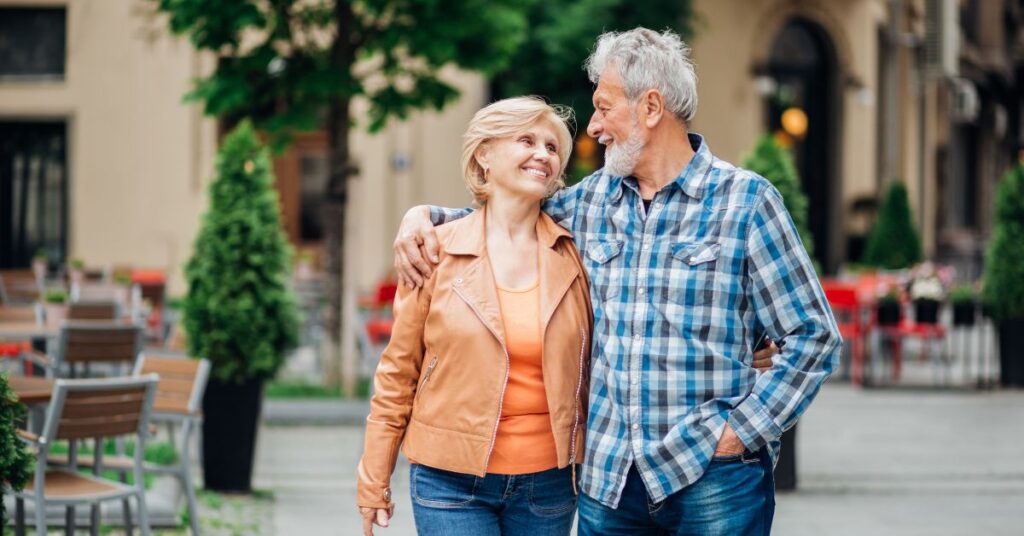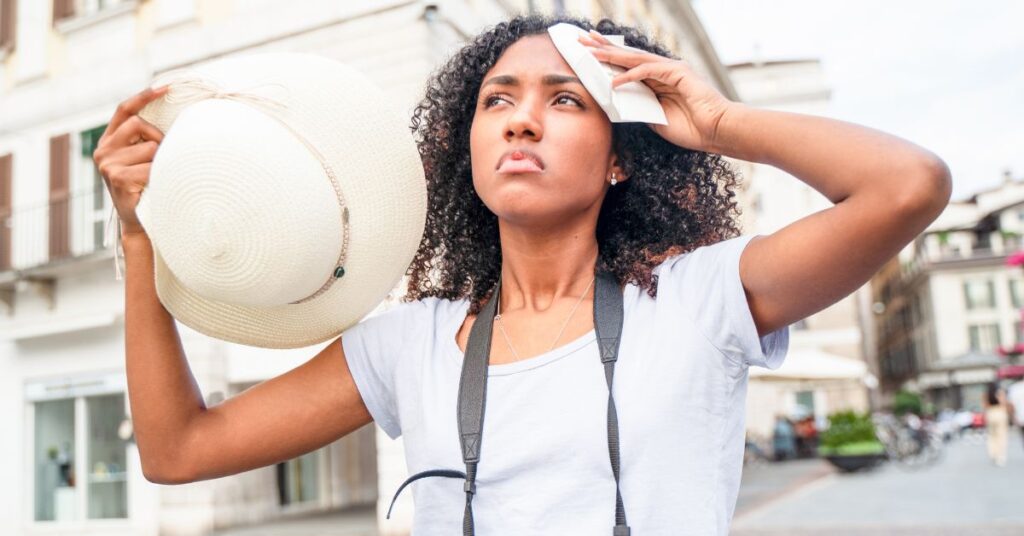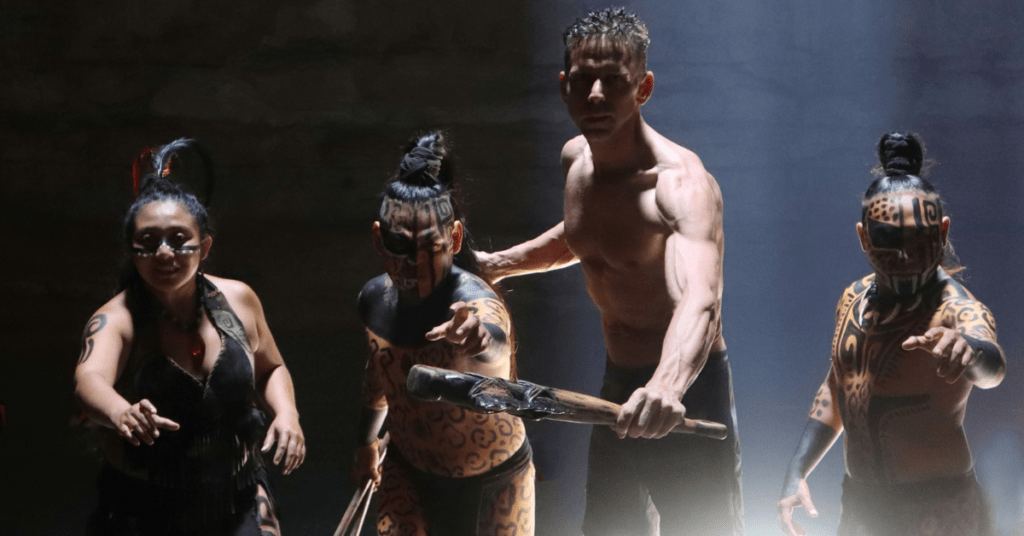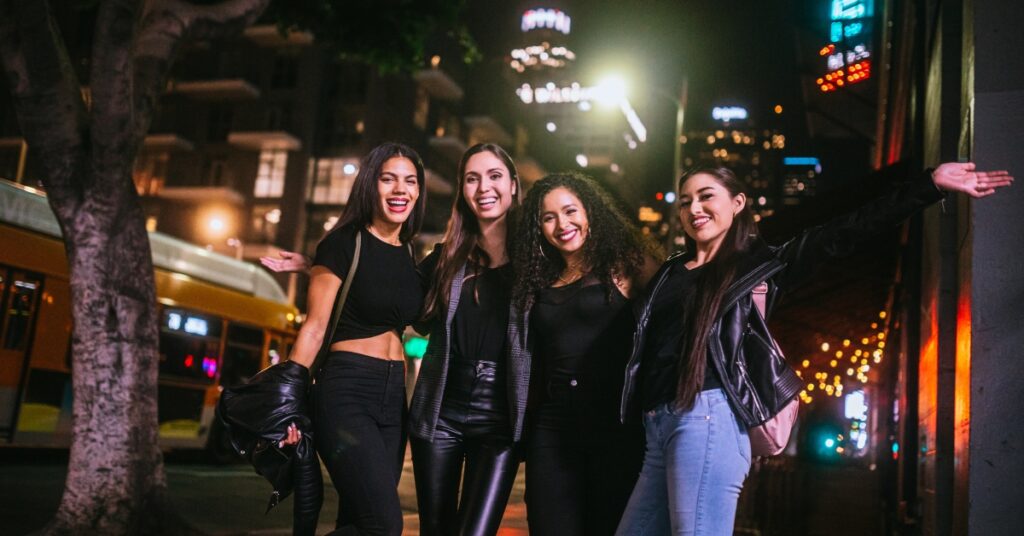Last Updated on March 10, 2025 by Eric Livingston
Live in Panama Now!
- Live in Panama Now!
- Would You Like to Live in Panama?
- Climate in Panama City
- Panama is Economically Stable
- Panama Brief History
- The Panama Canal
- La Folie Dingler aka Dingler’s Folly
- The United States Takes Over and Builds the Panama Canal
- John Frank Stevens, Chief Engineer from July 1, 1905, to April 1, 1907, the Brains Behind the Canal Project
- The Panama Canal Officially Opens on August 15, 1914
- Author David McCullough's, “The Path between the Seas”
- The Torrijos-Carter Treaties
- Banking System in Panama
- Panamanian Food
- Cities in Panama
- Panama City, Panama
- Places to Visit in Panama City
- Colón, Panama
- David, Chiriquí, Panama
- Places to See While in David, Panama
- Boquete, Chiriquí, Panama
- Other Notable Cities in Panama
- Visas in Panama
- A Panamanian Lawyer is Required Anything Beyond Tourist Visas
- Tourist Visa in Panama
- List of Countries Whose Residents are Able to Apply for a Friendly Nations Visa
- Huge Change in Requirements for Friendly Nations Visa as of 2021
- Requirements for the Friendly Nations Visa
- Permanent Residency Via Pensioner Visa Still Exists
- Brief Overview of the Steps Taken to Get Permanent Residency
- Retiree/Pensioner Program Discount Benefits
- Provisional and Automatic Permanent Resident Visa as a Forest Investor
- Driver's License in Panama
- Properties in Panama
- Taxes in Panama
- Cost of Living in Panama
- Bank in Panama
- Permission to Own Firearms
Would You Like to Live in Panama?
Panama is located in Central America, on the Isthmus of Panama (Spanish) that joins Central America with South America. Panama is bordered to the northwest by Costa Rica and to the southeast by Colombia. It’s bordered to the north by the Caribbean Sea and to the south by the Pacific Ocean. Panamá’s population is estimated to reach 4.5 million once the 2020 official numbers roll in (Spanish). This would be an increase of approximately 400,000 from the last 2010 census. Panama is divided into ten provinces and five indigenous territories.
Climate in Panama City
Panama City has a tropical climate averaging 27 ° C (80.6 ° F). It reaches maximum temperatures of around 39 ° C (100 ° F) and minimum temperatures of 20 ° C (68 ° F). The rainy season is from May to December and the dry season lasts from January to April.
Panama is Economically Stable
Panama has positioned itself as one of the fastest growing countries in Latin America. It’s heavily involved in the maritime, financial services and real estate sectors. Panama is of course known for the Panama Canal which is a constant stream of revenue. The Colon Free Trade Zone is the largest in the Americas and the second in the world after Hong Kong.
Panama Brief History
The Spanish sent Vasco Núñez de Balboa to conquer the territory of Panama. He encounters the Panquiaco indigenous tribe and hears about the existence of a new sea. On September 25, 1513, Vasco Núñez de Balboa scaled a mountain range where he was able to see the horizon of the new ocean. It just so happened to be the Pacific Ocean. Balboa was the first European to see the Pacific Ocean from the Americas. Panama is the only country in Latin America that honors the memory of Vasco Núñez de Balboa. His surname Balboa is used on Panama City’s principal Avenida Balboa. The official currency of Panama is called the Balboa, although it’s pegged to the United States dollar 1:1. Balboa paper notes don’t exist, although coins do. All paper currency is the U.S. dollar.
Panama Gains Its Independence
By 1821 Spain had already lost several colonies in South America. Due to its shrinking empire, the Spanish Crown offered Military General, Juan de la Cruz Mourgeon y Achet, a chance to reconquer these territories. In exchange, the Spanish Royalty promised he’d be elected as Viceroy. In October 1821 Juan de la Cruz travelled to Ecuador to form his army. He named Panamanian Military Officer, José de Fábrega, as his substitute on the Isthmus. The residents of Villa de Los Santos knew that most of the remaining Spanish Royal Army was in Ecuador.
Panama Celebrates Independence Day on November 28th
On November 10, 1821, the Panamanians started their independence movement. Eighteen days later on November 28, 1821, Panama proclaimed their independence from Spain. Due to the lack of budget, the small cache of weaponry available and the fear of being reconquered by Spain, the rulers of Panama voluntarily decided to join Gran Colombia under the leadership of Simón Bolívar.

The Dissolution of Gran Colombia
In 1830, Gran Colombia was dissolved with the separation of Ecuador, and Venezuela. Its leader and famed liberator, Simon Bolivar resigned and died soon after near Santa Marta, Colombia on December 17, 1830. This left Panama annexed to Colombia. Panama tried a few times to separate and become a sovereign nation. One of the main reasons Panama wanted to separate from Colombia was their refusal to accept an offer from the United States to purchase the rights to build the Panama Canal. At the end of the Thousand Days War, Panama separated from Colombia on November 3, 1903, with the help of the United States. The signing of the Hay-Buneau-Varilla Treaty ceded the Canal Zone to the United States in exchange for economic aid.
The Panama Canal
French Attempt at Building the Panama Canal
German scientist Alexander Von Humboldt came up with the idea of building a canal through Central America. The French led by Ferdinand De Lesseps, who built the Suez Canal, were the first to try and build the Canal in 1880. The French company Compagnie Universelle du Canal Interocéanique began construction of the Canal on January 1, 1882. The French mistakenly tried to build a sea level canal similar to the Suez without the use of locks. Moreover, the French were unaware of the danger that malaria and yellow fever posed due to the mosquitoes present. 90 percent of the unskilled laborers working on the Canal project were from the West Indies. They were immune to yellow fever but not malaria.


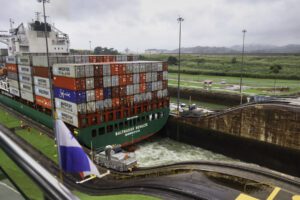


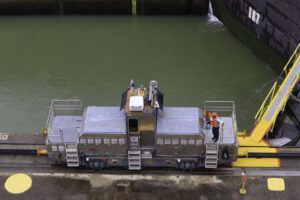
Frenchmen Working on Canal Project Lived Very Well in Panama
Director-Generals lived in a $100,000 house and were paid $50,000 per year, all from of stockholder money. Additionally, they were paid $50 for each day they showed up to work. One of the cars they drove around cost $42,000. The work schedule for a white Frenchman was from 8 to 11 a.m., and 2 to 5 p.m., allowing for a three-hour break; essentially on the clock for six hours. They were granted a five-month vacation, along with free traveling expenses to France and back after two years of service.
The French Panama Canal Workers Made Bank!
The French clerical workers were provided with fully furnished free housing. Keep in mind this was all during the 1880’s, not the 1980’s. $50,000 annual salary in 1882 is the equivalent of $1,454,941 today; and that $100,000 house would be considered a $2,909,882 home today. Without much to do in Panama, they resorted to the only forms of amusement available, gambling, saloons and whore houses. The city of Colón became a vile place filled with raging alcoholics, prostitutes and turned into sort of a wild west, anything goes slum.
In December of 1888 the French Attempt to Build the Canal Crashes
By December of 1888 a total of $234,795,017 had been spent on the project. Keep in mind this was 1888. This huge sum was said to have been “one-third expended on the canal work, one-third wasted, and one-third stolen.” Ferdinand De Lesseps and his son Charles were sentenced to five years imprisonment and ordered to pay a fine. Others involved with misdeeds associated with the Panama Canal Company received similar sentences. The French Court of Appeals annulled the sentence of Charles de Lesseps. His father’s sentence was never carried out. At that time on January 10, 1893, he was 88 and was in terrible mental and physical condition. He died on December 7, 1894. By 1892 it came to light that 150 French officials and even journalists had been bribed into advocating financial aid to the Panama Canal Company. Some refer to the undertaking as the Panama Canal Scandal.
La Folie Dingler aka Dingler’s Folly
Accounts of the fatalities in Panama reached France to which Jules Isidore Dingler, the Director-General in the first French company mocked. He stated:
Jules Isidore Dingler…only drunkards and the dissipated contract yellow fever and die.
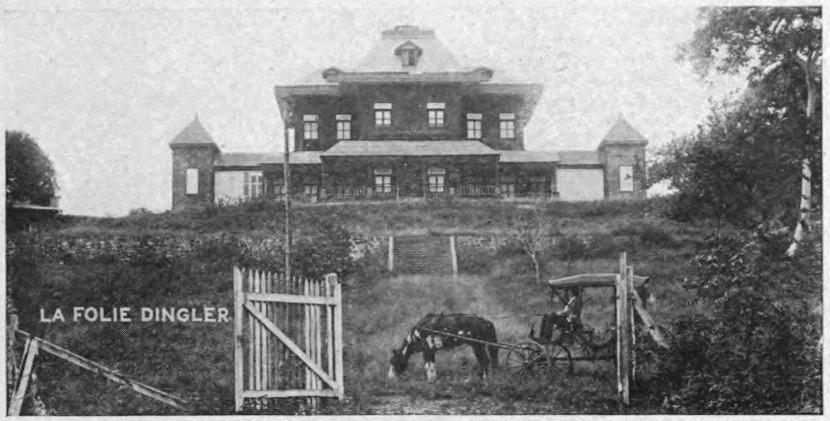
Jules Isidore Dingler Has a Mansion Built That He Never Lived In
Dingler ordered a mansion to be built on Ancon Hill, a mansion that he would never live in. Construction of the mansion began shortly after him and his family’s arrival to Panama in February 1883, along with numerous thoroughbred horses. The cost including the land was estimated to have been $50,000. Dingler made the trip to Panama with his daughter Louise, her fiancé, his son Jules, and wife Madame Dingler.
Jules Isidore Dingler’s Entire Family Including his Daughter’s Fiancé Die of Yellow Fever
All four died of Yellow Fever, the very disease he scoffed at. In January of 1884, his daughter died at about age 18. A month later his son Jules died at age 20. Shortly after that, his deceased daughter Louise’s young fiancé succumbed to yellow fever as well. He returned to France on business with his wife in June. They came back to Panama in October. They brought a young, talented engineer along with them named Philippe Bunau-Varilla who would later play an important role in the history of the Panama Canal. Unfortunately, tragedy struck again as Dingler’s wife also died from yellow fever on January 1, 1885.
Dingler Returns to France a Broken Man
Dingler stayed around Panama for a few months but in June of that same year he resigned his post. He ordered that his horses be shot before returning to France as a completely devastated, broken man in body and spirit. He died Paris, France on January 3, 1901, at age 65. The building was used for a few years as a quarantine station. It eventually fell into decay and was sold in 1910 for $525 and demolished to allow for quarry work to be carried out on Ancon Hill.
The United States Takes Over and Builds the Panama Canal
Hay-Bunau Varilla Treaty
Panamanians were backed by the United States and President Theodore Roosevelt after their cessation from Colombia. For Roosevelt, the construction of the Panama Canal was a geostrategic objective. On November 18, 1903, the Hay-Bunau Varilla Treaty was signed, which gave Panama rights to the United States to build the canal through the Panamanian Isthmus.
The Beginning of the American Construction of the Panama Canal
On May 4, 1904, U.S. Army Corps of Engineers Lieutenant Mark Brooke received the keys to the storage units and the Ancon Hospital. Surgeon General of the United States Army, Doctor William Crawford Gorgas, was named Chief Sanitation Officer. He and his crew were among the first to settle in.
The United States Knew it had to Control or Defeat Malaria and Yellow Fever in Order to Succeed
In the effort to defeat yellow fever included doors and windows were screened in. Homes were fumigated all throughout Panama City and Colon and cisterns and cesspools were oiled weekly. Providing running water to Panama City, Colon and other towns in order to get rid of water containers that served as perfect breeding grounds for mosquitos proved crucial. As a result of Gorgas’s endeavor, yellow fever was permanently wiped out. The last case reported in Panama City was on November 11, 1905.
Malaria was a Different Beast, Far More Lethal and Harder to Kill
Malaria was the cause of more deaths during the French and U.S. construction periods than yellow fever. In 1905, during the first year of the Americans arrival, nearly all of workforce, including Gorgas, had contracted malaria.
Dr. William Crawford GorgasIf we can control malaria, I feel very little anxiety about other diseases. If we do not control malaria our mortality is going to be heavy.
The U.S. Fight to Eradicate the Threat of Mosquitoes
Research had revealed that the Anopheles mosquito responsible for carrying malaria couldn’t fly far. Wide areas were cleared where people lived and worked. Swamps were drained; hundreds of acres of vegetation were cut down. Any standing water was sprayed with oil. Sanitation crews released thousands of minnows to eat the Anopheles larvae and bred ants, lizards and spiders to feed on adult mosquitos.
John Frank Stevens, Chief Engineer from July 1, 1905, to April 1, 1907, the Brains Behind the Canal Project
John Frank Stevens convinced President Theodore Roosevelt of the need to build a lock canal over a sea level canal. Stevens lobbied the U.S. Congress and others on Capitol Hill. He said a sea level canal was:
John Frank Stevens… an entirely untenable proposition, an impracticable futility.
Referring to his idea for a lock canal system, he further stated:
John Frank StevensIt will provide, beyond question, the best solution to the vital problem of how safely to care for the floodwater of the Chagres… Its cost of operation, maintenance and fixed charges will be much less than any sea-level canal.
Just as Work on The Canal was Going Well, Chief Engineer, John Frank Stevens, Inexplicably Resigns
John Frank Stevens, the Chief Engineer of the Panama Canal project resigned on April 1, 1907, citing personal reasons. This did not bode well with Theodore Roosevelt who felt he betrayed U.S. efforts. Roosevelt replaced him with Lieutenant Colonel George Washington Goethals. He graduated second in his class at West Point and had been familiar working with dams and locks. Incidentally, he was eventually promoted up the ranks to Major General on March 4, 1914. He would go on to say:
Lieutenant Colonel George Washington GoethalsStevens devised, designed, and made provision for practically every contingency connected with the construction and subsequent operation of the stupendous project… It is therefore to him, much more than to me, that justly belongs the honor of being the actual ‘Genius of the Panama Canal.’

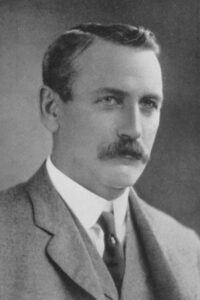

The Labor Force behind Building the Panama Canal
The highest number of laborers was reached on March 26, 1913, with a total of 44,733, not including the sick or absent. The higher skilled jobs were mainly tended to by Americans. The construction period averaged around 5,000 Americans on the workforce. Unskilled labor was mainly achieved by Barbadians or “Bajans”. Barbados authorized 19,900 laborers, an equivalent of 30 to 40 percent of the male population. Another 7,500 men came from the French islands of Guadeloupe and Martinique.
The Panama Canal Officially Opens on August 15, 1914
On August 15, 1914, the SS Ancon (not to be confused with the USS Ancon (AGC-4)) made the first official journey through the Panama Canal as part of the canal’s opening ceremonies, although the first unofficial crossing occurred seven months earlier on January 7, 1914, by Alexandre La Valley, an old French crane boat. There was not much fanfare at the opening ceremonies as World War I was preoccupying the world at the time.
Legacy of the Panama Canal Construction
The Panama Canal cost the United States around $375,000,000, including the $10,000,000 paid to Panama and the $40,000,000 paid to the French company. It was the most expensive construction project in United States history at that time. Fortifications cost an additional $12,000,000. Astonishingly, the canal the Americans built cost less than originally estimated, with coming out some $23,000,000 below the original 1907 estimate.

once from November 14th to November 17th, 1906
William Howard Taft, not Theodore Roosevelt, Visited the Panama Canal Several Times
President Theodore Roosevelt is generally associated with the success of building the Panama Canal. Roosevelt, the Nobel Peace Prize Winner in 1906, should not be discredited whatsoever. He served two terms as President of the United States from September 14, 1901 – March 4, 1909.
Theodore Roosevelt Only Visited the Panama Canal Once
However, President Theodore Roosevelt only visited the Panama Canal on one occasion for just a few days, from November 14th to November 17th, 1906. It was the first time a U.S. President visited a foreign country while in office. Three presidential terms coincided within the ten-year Canal construction. Roosevelt, William Howard Taft and Woodrow Wilson were each President at one time during the Canal’s construction.
William Howard Taft Visited the Panama Canal Zone 5 Times
Taft was the one who had the most hands-on participation over the longest period. William Howard Taft visited Panama five times as Roosevelt’s Secretary of War and made two more trips as President (although some sources only list one visit during his presidency). He also hired Engineer John Frank Stevens and when Stevens inexplicably resigned, Taft recommended Goethals as his replacement. When William Howard Taft became President in 1909, Canal construction was halfway built. For some reason, Taft is hardly ever mentioned in regard to his role in the construction of the Panama Canal.
Author David McCullough’s, “The Path between the Seas”
In his book “The Path between the Seas”, David McCullough wrote:
The Path between the Seas, David McCulloughThe creation of a water passage across Panama was one of the supreme human achievements of all time, the culmination of a heroic dream of over four hundred years and of more than twenty years of phenomenal effort and sacrifice. The fifty miles between the oceans were among the hardest ever won by human effort and ingenuity, and no statistics on tonnage or tolls can begin to convey the grandeur of what was accomplished. Primarily the canal is an expression of that old and noble desire to bridge the divide, to bring people together. It is a work of civilization.
The Torrijos-Carter Treaties
The Torrijos-Carter Treaties of September 7, 1977, superseded the Hay-Bunau Varilla Treaty of 1903. On December 31, 1999, the United States relinquished complete control of the canal back to Panama under the condition that the United States retained the permanent right to defend the canal from any threat that may disrupt its service to ships of all nations.
Banking System in Panama
The Panamanian banking system is the most important financial center in Latin America due to its economic and political stability. Panama’s geographic location, its currency the Balboa, with a value pegged 1:1 with the United States dollar makes it attractive to investors around the world.
The Beginning of the Banking Sector in Panama
The first banks established in Panama were in 1861. In 1903 Citibank and Banco Nacional de Panama became the first two institutions of modern Panamanian banking. BNP Paribas was the first European bank to set up in Panama. In 1955 Banco General became the first to start its operations with Panamanian private capital. The organization that manages regulatory compliance is the Superintendency of Banks of Panama (Spanish).
Panama Papers
In April 2016, Panama became infamous for the Panama Papers. It’s the biggest leak of confidential information in history. 11.5 million documents contained detailed financial data of 214,488 offshore entities totaling 2.76 terabytes. Some of these documents went as far back as the ‘70’s. Mossack Fonseca was the law firm that was hacked and responsible for setting up the offshore entities. Their database was easily hacked according to IT experts as they were running an outdated version of Drupal and they separate the server used for their email and/or website from another server that could’ve held their client’s sensitive data. Offshore business entities are not illegal, and the majority of documents didn’t show any illicit or illegal actions. Though it is not a crime to own an offshore entity it’s sometimes used for money laundering and tax evasion.
John Doe Leaks Information to German Journalist
A “John Doe” leaked the information to German journalist Bastian Obermayer from the newspaper Süddeutsche Zeitung. On May 6, 2016. John Doe claimed income inequality as the reason he leaked the information stating, “simply because I understood enough about their contents to realize the scale of the injustices they described”. He remains anonymous to this day as he’s stated that he fears for his life. On May 9, 2016, after the information leaked to Süddeutsche Zeitung was corroborated; all of the 214,488 offshore entities were posted by International Consortium of Investigative Journalists (ICIJ) via a searchable database on its website.
Panama Papers Shock the World and Mossack Fonseca Closes in 2018
The Panama Papers shocked the world and publicized information on the concealment assets, profits, and properties of athletes, businesses, celebrities, heads of government, financial institutions, and wealthy individuals. Mossack Fonseca had operations incorporated in the United States in the well-known secrecy jurisdictions of Nevada and Wyoming. Mossack Fonseca had over 500 employees and 44 offices. They closed their firm in 2018 due to the irreversible damage the Panama Papers caused to their reputation.
Panamanian Food
Panamanian cuisine is the fusion of different Amerindian, Hispanic, African and Afro-Antillean cultures. Their dishes are full of color and flavors. The most popular dishes in Panama include banana, cassava, coconut milk, garlic, and rice along with meat or seafood. Panamanian food is characterized by lots of rice in different forms and presentations. Cachapas, ceviche, gallo pinto, ropa vieja, sancocho are some traditional Panamanian dishes. The calamari and ceviche were delicious and fresh!

at the causeway aka La calzada in Panama City, Panama
Cities in Panama
Panama City, Panama
Panama City is the capital of Panama. It’s the largest and most populous city in the country. Located on the shores of the Gulf of Panama, in the Pacific Ocean Panama City consists of 26 districts. According to INEC, Panama has 2,011,780 million inhabitants including its metropolitan area. It’s the administrative, cultural, economic and political, center of the country. Panama City is the most important banking center in Latin America. Part of its economic stability is due to the Panama Canal and its constant stream of revenue.
Panama City Real Estate and Expat Boom
Panama City’s real estate sector has “literally” skyrocketed in the past 20 years. Its skyline resembles Miami somewhat. It’s considered as “the city of skyscrapers” in Latin America. Panama City is very multicultural. It’s “normal” to see foreigners in Panama City. Many expats have come to live in Panama for the slightly lower cost of living than their home country, especially if they take advantage of the discounts offered to seniors. Panama City proper can actually be rather expensive without any assistance. Rent prices are about on par with rent prices one may expect in a city of its size in the United States. Expats usually come from the United States, Canada and Europe.
Places to Visit in Panama City
Panama Canal
The Panama Canal has a nice visitor’s center at the Miraflores locks where tourists can learn about the history of the canal and see how it works. The Miraflores Visitor Center includes a museum with old artifacts, photographs and story about the construction of the Panama Canal and its history. Up the escalators is an IMAX 3D theater. The theater shows a 2019 documentary in 3D titled “Panama Canal: A Land Divided-A World United” about the history of the Panama Canal. It’s well narrated by Morgan Freeman. The documentary is about an hour long and is great primer to watch before venturing out and seeing the actual canal as a cargo ship slowly passes through the extremely narrow locks.
Casco Viejo
Old Panama, now known as Casco Viejo or Casco Antiguo, was re-born from its own destruction. Just to be clear, Casco Viejo was Panama City. Casco Viejo was originally chosen since it lies on a Peninsula, therefore making it more formidable against possible attacks by English or French enemies. Its port shipped gold and silver that came from South America to Spain. The city suffered frequent fires and an earthquake in 1612 that ruined much of the city. On January 28, 1671, the old Panama City was looted by the infamous Pirate Henry Morgan and his men.
The Spanish Crown Orders to Build a New Panama City
Governor Juan Pérez de Guzmán gave orders to leave the city. First, however, they set fire to part of the city so it wouldn’t fall into the hands of the enemy Morgan. In 1673 that the Spanish Crown ordered to move the capital and build a new city on a small peninsula, located 8 kilometers (4.1 miles) from the old Panama City.
Panama Amador Causeway
Amador Causeway or “Calzada de Amador”” is a road that connects Panama City with four islands in the Pacific Ocean. The islands Culebra, Flamenco, Naos and Perico, form a small archipelago. The road begins in an area near the southern entrance to the Panama Canal, in Ancón.
The United States Builds the Amador Causeway
The Amador Causeway was built by the United States government in 1913 with the rocks that were extracted from the construction of the Panama Canal. The Amador Causeway was part of the United States military complex known as the “Amador Fort” that was established to protect the canal.
The Amador Causeway Today
Today, the Amador Causeway is one of the most visited sites by residents and tourists. It’s a family friendly area. It has a convention center, recreational facilities including a jungle gym for kids, and restaurants. It features a wide paved sidewalk with two specific lanes. One lane is for people walking or jogging and the other lane is for wheeled vehicles such as bicycles, electric and traditional skateboards, quadricycles, motorized scooters and skates. It’s got a great view of Avenida Balboa in Panama City and the Bridge of the Americas. You can also see boats off in the distance waiting their turn to pass through the Panama Canal. Canadian Architect Frank Gehry designed a very colorful Biodiversity Museum called Biomuseo that was inaugurated in June 2014.
Avenida Balboa and Cinta Costera in Panama City
Avenida Balboa is the “cool” main avenue in Panama City. It’s 3.5 kilometers (2.17 miles) long and is located on the shores of the Pacific Ocean along the Cinta Costera. Avenida Balboa runs along the Cinta Costera. It’s popular for its recreational spaces such as basketball courts, parks, volleyball courts, and a track for cycling, jogging, riding scooters, and skating. Cinta Costera is safe and well-lit in the evening for people to enjoy.
Best Neighborhoods to Live in Panama City
Panama City has become a melting pot of Panamanians and foreigners, somewhat similar to Miami, Florida, United States. Panama’s favorable visa programs attract foreigners. The areas with growing real estate development are Panama East, West and the North Coast. The properties on Avenida Balboa are nice with beautiful views of the Panama Bay in front of the Cinta Costera. The neighborhoods located on the East Coast offer luxury properties are in Paitilla and Punta Pacifica. In Panama Oeste, the neighborhoods of Arraiján and La Chorrera are in high demand. Developers are starting to build in the Las Cumbres area in Panama Norte, the newest area of the city. Areas such as Bella Vista and San Francisco, despite being older, are still sought after. The best places in Bella Vista are El Cangrejo and Obarrio, which are located near the banking sector.
Colón, Panama
Colón is the capital of the province of the same name. Colón is located on the Caribbean coast and is the third most populous city in Panama. According to ECLAC in 2018 the port of Colón is the most important in Latin America for the movement of cargo. The analysis includes the behavior of a sample of 31 countries and 118 ports.
Colón Free Trade Zone
Colón is visited frequently by residents and tourists. It’s known as a shopping destination since Colón is one of the largest free trade zones in the world. One can enjoy its beautiful beaches such as Playa Langosta and visit the Fort of San Lorenzo and Portobelo.
Climate in Colón
Colón, Panama, has a tropical rainforest climate. The city is consistently warm and humid throughout the year, with little variation in temperature. Average temperatures typically range between 24°C (75°F) and 31°C (88°F). The region receives a significant amount of rainfall, with a distinct rainy season spanning from May to December. Heavy rains are very common.
David, Chiriquí, Panama
David is the capital of the state of Chiriquí, located 30 kilometers (18.1 miles) from the Pacific Ocean. It’s the capital of commerce and government services for the western region of Panama. Its chief industries are agriculture and livestock. There are various hospitals, markets, restaurants, and shopping centers in David. Many residents that live in smaller towns relatively close to David make trips for shopping and medical care. David International Airport has daily flights to and from Panama City and to several destinations around the world.
Climate in David, Chiriquí
David has a tropical climate with an average temperature of 32 ° C (90 ° F). The dry season runs from December to April. May through September sees some rain. It rains heavily in David in October and November.
Places to See While in David, Panama
Miguel de Cervantes Park
The Miguel de Cervantes Park is located in the heart of David. In 2007 David was remodeled. It improved its green areas and added park benches. The Miguel de Cervantes Park features a geometric figure that simulates an obelisk. It’s located in a fountain that lights up at night. There are various street vendors who offer their ice cream or crafts. The Sagrada Familia Church lies just a few meters from the Miguel de Cervantes Park.
Boca Chica, Chiriquí, Panama
Boca Chica is a small town located in the San Lorenzo district. It’s 39 kilometers (24.4 miles) from David on the shores of the Pacific Ocean. Boca Chica is a tourist destination although not well known by most foreigners. Boca Chica is a sport fishing town as it’s the gateway to the Gulf of Chiriquí National Marine Park. There’s a wide variety of fish such as corvina, goldfish, red snapper, and tuna. Because Boca Chica is somewhat isolated, it’s not exploited by tourism. In addition to sport fishing, people bird watch, hike, kayak, scuba dive, snorkel, and go whale watching from July through October.
Boquete, Chiriquí, Panama
Boquete is a town located in the northern part of the state of Chiriquí. Much of Boquete is located on the Cordillera de Talamanca. The calming Caldera River runs right through the town. Agriculture is important to the local economy. Coffee is grown on fincas. Fruits and vegetables are abundant and inexpensive. Meats are mainly brought in from surrounding towns and tend to be quite inexpensive. Boquete has a small population of 22,435 according to Wikipedia. There’s a café, a few clothing stores, pharmacies, restaurants and supermarkets.
Climate in Boquete, Chiriquí
Due to its location in the mountains, Boquete has a temperate climate. Average temperature ranges from 14°C (57.2 °F) to 24 ° C (75.2 °F). The dry season is from December to April; however, it rains all year round in Boquete. During May through November, the rains are more intense.
Expats Seem to Love Boquete, Chiriquí, Panama
Boquete has become home to numerous expatriates from Canada, Europe and the United States, many of whom are retired and have chosen to make Boquete their permanent residence. A great percentage of Boquete’s residents were born elsewhere. Due to its location in the mountains people in Boquete experience a pleasant climate that without the need for air conditioning or heaters and beautiful mountain views. I loved my time in Boquete and felt the appeal it has.
Real Estate in Boquete, Chiriquí, Panama
Real Estate in Boquete is quite expensive. Boquete is a good example of gentrification. The high demand from expats is due to the pleasant climate, natural beauty and overall safety. A quick search online on a particular real estate portal showed the cheapest home in Boquete at $123,000. One of the most expensive homes was listed at $1,475,000 and didn’t even sit on half an acre. Granted it had 4,834 square feet (449.1 square meters) but less than a half an acre at .408? The “gringo tax” is real in Boquete.
Other Notable Cities in Panama
Bocas del Toro is an island located southeast of Costa Rica along the Caribbean Sea and forms the archipelago of Bocas del Toro. Bocas del Toro is north of the Province of Chiriquí. Bocas del Toro or also known as Bocas Town is the capital of the province of the same name. Isla Colón is the most populated island in the Bocas del Toro archipelago. The majority of the bars, crafts, hotels, laundromats, restaurants, and travel agencies are on Isla Colón. The Bocas del Toro International Airport is on Isla Colón, although its “international” name is a bit misleading. The only international destination flown to is close by to San Jose, Costa Rica. All other flights are domestic either to David, Panamá or Panamá City, Panamá. Also, there is no fuel available at the airport. Isla Colón is the embarkation point for most visitors who want to know the other islands of the Bocas del Toro archipelago.
Bastimentos National Park
Bocas del Toro combines the history of the Ngäbe-Buglé indigenous people with its stunning natural beauty. The largest islands are Islas Bastimento, Careneros, Cayo Agua, Colón (main), Popa, San Cristóbal and Solarte. The charming Bastimentos National Park is set in the Archipelago of Bocas del Toro. The park encompasses a large part of the Bastimentos, Cayos and Zapatilla islands along with the magnificent waters and mangroves that surround the islands.
Coronado lies on the Pacific Ocean, one hour from Panama City. Coronado and its beaches are popular destinations for quick getaways for from the hustle and bustle of Panama City. Coronado is known for being one of the first beach developments in Panama. Coronado has enough infrastructure and amenities to live full time. Close to Coronado are the beaches of Playa Coronado, Playa El Palmar and Playa Gorgona. Many go to Coronado to get away and just to lay back chill. However, it also has entertainment options, equestrian activities, golf courses, and water sports.
Visas in Panama
Tourist Visa in Panama
The Tourist visa is valid for 90 days and it’s automatically granted to a vast number of nationals upon their arrival in Panama City. One can consult the Panama Immigration Department (Spanish) for more information.
List of Countries Whose Residents are Able to Apply for a Friendly Nations Visa
In May 2012, the Panamanian Government issued a decree that the citizens of the following “friendly nations” of Panama are: Andorra, Argentina, Australia, Austria, Belgium, Brazil, Canada, Chile, Croatia, Cyprus, Czech Republic, Denmark, Estonia, Finland, France, Germany, Greece, Hong Kong, Hungary, Ireland, Israel, Japan, Latvia, Liechtenstein, Lithuania, Luxembourg, Malta, Monaco, Marino, Montenegro, Netherlands, New Zealand, Norway, Poland, Portugal, Serbia, Singapore, Slovakia, Spain, South Africa, South Korea, Sweden, Switzerland, United States of America, Uruguay, and the United Kingdom.
Huge Change in Requirements for Friendly Nations Visa as of 2021
The Panamanian government issued executive decree #197 on May 7, 2021, which significantly changes the requirements to obtain permanent residency in Panama with the popular Friendly Nations Program. Previously to this updated law, one could open a business and deposit $5,000 in a Panamanian bank to prove “economic ties” with Panama. I know because I did it. However, now one must either satisfy the economic solvency requirement by showing valid (real, not fake stuff) employment in a Panamanian company, or make a real estate investment of at least USD$200,000. I read that financing is allowed but I’m not sure how a foreigner would qualify for financing a property purchase in Panama.
Requirements for the Friendly Nations Visa
Listed below are the requirements apart from the economic solvency of a $200,000 real estate investment.
The passport must be valid for no less than 6 months from the date the application is submitted.
Other ID documents from the country of origin (such as a driver’s license or state ID).
Six passport-sized photographs.
This must be obtained in Panama.
A “Rap Sheet” is needed if one if from the United States. Otherwise, a foreigner will need their nations’ federal equivalent. The document must be apostilled.
Permanent Residency Via Pensioner Visa Still Exists
Panama still offers a retiree/pensioner visa. There is no age requirement, but the pension must be life-long, and annuities are not allowed since they may be cashed out. As of 2023, last I checked the economic solvency requirements were $1,000 per month per person or $1,250 for a couple.
Brief Overview of the Steps Taken to Get Permanent Residency
The lawyer will collect all the necessary documentation and submit it to the Migración de Panama. The applicant must go to the Servicio Nacional de Migración once the lawyer gets an appointment set. At the appointment, the government will issue a provisional residence card and a multiple visa will be stamped in the applicant’s passport. This will allow the card holder to enter and leave the country as many times as necessary while their request for permanent residence is being processed.
Time It Takes to Get Permanent Residency Has Also Changed
Retiree/Pensioner Program Discount Benefits
According to the Authority for Consumer Protection and Defense of Competition (Acodeco) of Panama (Spanish), permanent residents holding a Retiree Pensioner card are entitled to the following discounts:
Provisional and Automatic Permanent Resident Visa as a Forest Investor
For people that don’t qualify for the Friendly Nations Visa or Retiree/Pensioners Visa there is an alternative. A foreigner may individually or through a company invest a minimum of $100,000 (up from $80,000 just a couple few years ago) in Panama’s reforestation program. However, reading Article 180 dated May 7, 2021 directly from the Panama’s immigration website (Spanish) it also states that a $350,000 re-forestation investment will “automatically” grant permanent residence.
$100,000 Forest Investment vs $350,000 Forest Investment?
It’s a little unclear as to what the $100,000 forest investment gives you. I assume it gives you “provisional” residence (as the title suggests in Spanish) with a 2-year waiting period similar to the $200,000 Friendly Nations real estate investment. It’d be best to speak to a Panamanian lawyer regarding the vast difference between these two investment amounts. An additional $2,000 has to be paid for each dependent. Additionally, you’ll have to give a certified check in the amount of $250 made out to the National Treasury and another certified check of $800 made out to the National Immigration Service
Driver’s License in Panama
Foreigners may drive vehicles in Panama with the driver’s license of their country of origin for a maximum period of 90 days matching the length of the tourist visa. After this period, foreigners will need to do a border run with their vehicle and return or obtain a Panama driver’s license once they’ve obtained residency status in Panama. The Land Transit and Transportation Authority (ATTT) in Panama (Spanish) is in charge of issuing driver’s licenses. U.S. citizens can consult the requirements through the United States Embassy in Panama.
Legalize a Foreign Car
In cases in which the interested party wants to legalize his foreign car, one must get an appraisal of their car and pay import taxes. For more information, consult the National Customs Authority of Panama (Spanish).
Properties in Panama
Panama is an attractive real estate market for foreigners. They have the same rights as Panamanians and Panama has very strict property rights laws to protect both the buyer and seller. It’s completely legal for foreigners to own property in Panama in their personal name, although it’s generally recommended that foreign clients keep properties in the name of a Panamanian Corporation, for the purposes of asset protection and possible tax benefits.
The Process of Purchasing Property in Panama
The purchase process is very similar to the rest of Latin American countries. One must hire a lawyer to handle the purchase. They work together with notarios and act similar to a real estate title company in the United States. Their job is to verify the property title is free of any encumbrances such as liens, past due property tax payments etc. The attorney should review the purchase and sale contract with their client. Lastly, the deal will close, and the purchase and sale contract will be submitted with all required closing documents to the Public Registry. Transfer of ownership from the previous owner to the new owner will be recorded.
Taxes in Panama
Panama is well-known for being a territorial tax country. This means that residents whose income is derived from outside of Panamá aren’t liable to pay any income tax to Panama. Residents that earn any Panamanian sourced income, however, have to pay income tax. Additionally, capital gains and value added tax, or sales tax (VAT) are paid.
Income Tax (ISR) in Panama
Anyone moving to Panama will be subject to income tax if they live there for more than 183 days during a calendar year. Income tax is determined based on a simple three tier system as follows:
Married couples can receive an $800 tax break on their joint return.
Capital Gains Taxes in Panama
Capital gains tax varies according to the type of transfer of furniture, real estate and securities. Each of these transactions must pay capital gains tax. A capital gain is a benefit resulting from the sale of an asset. Securities such as stocks, bonds or real estate are subject to capital gains tax. Capital gains are owed when the amount of money received from the sale exceeds the original purchase price (profit).
Capital Gains Taxes and Real Estate in Panama
For the typical one-off sale, real estate generally has a standard rate of 10%, although those that are in the business of buying and selling property can request certain deductions. A capital gain on profit from the sale of securities is 5%.
Property Taxes in Panama
People or corporations whose property is appraised at $120,000 or less are not subject to pay property tax if the property is used as their personal home; meaning they actually live there.
Property Tax Rates Were Established on January 1, 2019 / New Appraisals of Property Won’t Occur Until 2024
Value Added Tax (VAT) in Panama
The value added tax (VAT) (sales tax) on most products and services is 7%. Panama has the lowest sales tax in Latin America. It applies to certain food staples, medical supplies, and medical care not subject to VAT. Public transportation services are exempt from paying VAT. Exports of merchandise and purchases of goods made in the Colon Free Zone are also free from sales tax. Taxes on hotels, certain food one may consider “junk food” and alcoholic beverages are collected at 10%. Tobacco products are taxed a VAT of 15%.
Cost of Living in Panama
The cost of living in Panama is far from the cheapest in Latin America. However, one must take into account the quality of life that exists in the country, mainly in Panama City. According to the Mercer Quality of Life Survey (Spanish), which accounts for economic, environmental, political, and sociocultural aspects of each nation Panama City was ranked fifth in Latin America. It was surpassed by Buenos Aires, Argentina, Montevideo, Uruguay, San Juan, Puerto Rico and Santiago, Chile.
Compare Cost of Living in Panama City with Other Cities Using Expatistan and Numbeo
Numbeo is a website that compares the costs of living of various cities around the world. Keep in mind that the data displayed by Numbeo can be entered by any user which can affect its accuracy whether by someone with mal intent or by simple human error. In smaller cities, there may not be enough contributors, which can lead to unreliable data. One or two people who enter their own data cannot accurately represent the true cost of living in a town or city. However, it’s a great tool to use as long as there are enough contributors in each city. Expatistan is another website that works much like Numbeo. It’s wise to check both sites to ensure the data displayed when comparing cities is similar on both sites.
Salaries in Panama
The minimum wage in Panama is divided into two regions:
Panama, Aguadulce, Almirante, Antón, Arraiján, Atalaya, Barú, Bocas del Toro, Boquerón, Boquete, Bugaba, Capira, Chame, Changuinola, Chepo, Chiriquí Grande, Chitré, Colón, David, Dolega, Donoso, Guararé, La Chorrera, Las Tablas, Los Santos, Natá, Omar Torrijos Herrera, Parita, Pedasí, Penonomé, Pesé, Portobelo, San Carlos, San Félix, San Miguelito, Santa Isabel, Santa María, Santiago, Taboga and Tierras Altas.
The rest of the country’s districts.
The hourly minimum wage rates vary according to the region, economic activity, occupation and size of the companies. You can check the most up to date minimum wage rates by going directly to the Ministry of Labor and labor development (Mitradel in Spanish).
Bank in Panama
Panama has a very solid banking system due to its economic stability. Opening a bank account can be a little complicated for a non-resident foreigner with quite a bit of red tape. However, there are several banks that are happy to open accounts for non-resident foreigners.
In general, almost all banks request the following requirements to open a checking or savings account in Panama:
Start the Process of Opening a Bank Account in Panama Before Travelling to Panama
Some banks require that documents be apostilled. Banks require the physical presence of the person who’s applying to open an account. Before going to Panama one may want to contact the bank and send their scanned documents so that they are pre-authorized before leaving to Panama thus expediting the process.
Firearm Info
For more information consult the Ministerio de Seguridad Pública (Spanish).
Permission to Own Firearms
There are only very few authorized stores that sell weapons and ammunition in Panama City. They are expensive, as much as double what one would pay in the United States. Short-barreled rifles or cut-barrel shotguns are legal in Panama, although they were not originally purchased as such. Ammunition may be purchased at the time one obtains their weapons permit. Although armor-piercing bullets are prohibited, high-speed or hollow point bullets are permitted.
Latam Living Page List
Latam Living Post List
Moving Abroad? Congratulations! 5 Essential Things to Consider!
Moving Abroad? Congratulations! 5 Essential Things to Consider! Moving Abroad? Have You Considered What’s Truly…
Crazy! Mérida Record Temperature of 43.7 ºC (110.66ºF) 🥵
Crazy! Mérida Record Temperature Reaches 43.7 ºC (110.66ºF) On March 26th, 2024, Mérida Record Temperature…
9 Pros of Living in Mérida, Yucatán
9 Pros of Living in Mérida, Yucatán Here are 9 Pros of Living in Mérida,…
Mérida is Overhyped?
64 Million Hispanics and Latinos in the United States
64 Million Hispanics and Latinos in the United States Hispanics and Latinos Don’t Mean the…
